Betsy-Tib
By Elspeth C. Young
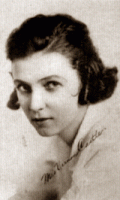 |
| Irene Castle |
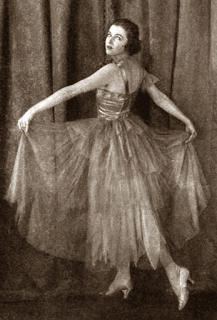 |
| Irene Castle, c. 1917 |
Betsy-Tacy (and Tib). And since it's always in that order, Tib seems to be a parenthetical. Even though the chocolate-colored house joined the Hill Street duo early on, it always stands a little aloof: it's on a different street; its stateliness almost makes it unapproachable; and its child occupant—little bewitching beauty, Tib Mueller—seems to suffer from a bit of the same problem. Tib is not Betsy's first confidant; not the secondo in the Cat duet; not the first companion of choice.
Perhaps that's one of the reasons I like Betsy's Wedding so much. It, of all the Betsy-Tacy series, could really be called Betsy-Tib. When I was a child, Tib's blonde moppet of picturesque hair, her daintiness on any dance floor, and her slight, affected German accent (to say nothing of her high school inability to readily understand all the jokes) didn't fully appeal to me; but Tib is an absolute favorite now. Perhaps it's her artistic temperament, her independent spirit, her not-willing-to-settle-for-a-Lausbub'n-ness, her resourceful and admirable creativity, her staunch patriotism and love of family—or all of these—which draws me to her now that I'm older. And so I enjoy the starring role Tib plays in this final chapter of the Deep Valley canon—the place where Tib steps into the limelight for one final, delightful performance.
And speaking of performances, it's the dance floor that is Tib's real stage. "Your tango is a poem," Betsy tells her. Even though Mr. Bagshaw isn't Mr. Right, at least he's still useful for dancing. Rocky isn't Mr. Right either—but we all knew that as soon as he demeaned dancing as an activity not worth the gray cells, he wasn't going to be useful for anything—and we recognized Jack Dunhill for just what he was as soon as he stepped on the scene. He's young, dashing, and a dancer. After all, dancing and Tib have been synonymous since she first wore her "white accordion-pleated dress" and danced the "Baby Dance" while little more than a baby, herself.
And so the Music Box in our new Fall issue featuring Betsy's Wedding, is all about Tib. But there simply won't be room inside the issue for everything I found, so we thought we'd share a little bit here, hoping to whet your appetite for what's coming next.
The Castles
Vernon and Irene Castle, alluded to by both Betsy and Mr. Bagshaw in the pages of Betsy's Wedding, are a dreamy success story—the greatest success being, perhaps, that success did not spoil them. Being the toast of London, Paris, and New York didn't alter their youthful innocence, and only enhanced their love for each other. When Vernon went to war, he left all his heart with his beloved Irene. His letters home are a taste of true love; her book about him is just the same. After his tragic—and heroic—death in 1918, Irene penned the following poem: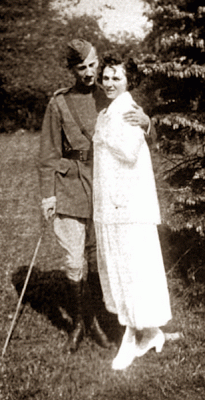 |
| Vernon and Irene Castle, "Such A Little While" |
How short a while it seems since we were glad;
And danced; or laughed together at a play!
Nor did we ever think of Life as sad;
It seemed so sweet to us — just yesterday.
Together we had drunk our cup of Fame
And, side by side, had loved, and worked, and played
And Life to us seemed but a happy game;
We met our fortunes laughing — unafraid.
And then — the War! Its meaning well we knew;
Hushed were our hearts; we dared not speak of Life.
Our haunting fears in each swift moment grew
Beneath the darkening shadow of the strife.
One day in silence, dear, you went away—
In silence braver than brave words; I know
You felt I would never have you stay,
However hard it was to let you go.
Yet now it only seems but yesterday
That you were here, and smiled and talked of war
As children do, who with tin soldiers play;
How hard to think you gone forevermore!
And now you lie quite still! You laugh no more;
Those lips, that loved Life well, are mute to-day.
And so the lights are dimmed, the dance is o'er.
The music hushed — the laughter dies away.
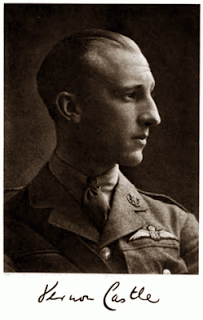
With a pseudonym coined by fellow actor Lawrence Grossmith—inspired by Vernon's native Britain and Windsor Castle—the then nineteen-year-old Vernon Blyth became Vernon Castle: comedy actor. Something of an eccentric who liked to collect forlorn (and even unusual) animals—his last pet was a Rhesus monkey—this soft-hearted, dashing young man was not thought to be more than second-fiddle (and poster boy for the new--disdained--English wrist-watch). But a few short years later, star-struck Irene Foote, who was anxious for anything theater, met him at a swimming party, and begged his help getting an audition. "He was very nice about it," Irene mused later, "but, as I remember, he showed no particular enthusiasm. At that time I did not understand how much and how thoroughly the amateur can bore the professional, especially when he wants help." But, she continued, "Always considerate, as I came to know so well later on, he promised me that he would talk to Lew Fields about me . . . my agitation was, of course, very great. I had come in from new Rochelle with a pianist, who feebly accompanied me in the huge dark theater. I danced with castanets a sort of Spanish tarantella. Later in the Fields' production of "The Summer Widowers" in Brooklyn, I appeared for the time in public."
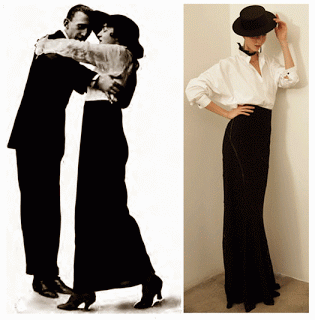 |
| Fashion photograph, right, by Elizabeth Lippman for The New York Times |
About their ensuing courtship, Irene is modestly quiet, but Vernon's interest soon turned to love, and the two became engaged—despite some fatherly objections to the acting business and an international marriage (to a Brit!)—but Vernon's goodness won over everyone's hearts, and the two embarked on a halcyon few years of toil, fame, and fortune. Ironically, though their names were to become synonymous with the art of ballroom dance, Vernon and Irene never danced together in the days before their marriage—not even at parties. "Necessity made us dancers," Irene wrote, "and it was not until we got to Paris that necessity urged us," but, she continued, "our teamwork could not be touched." She was right.
The two transformed all that was odious in early ragtime dancing into legendary grace. Vernon wrote, "Dancing should be the poetry of motion; the steps are mere incidents . . . . A beautiful dancer is a beautiful picture." And so they were. Irene's beauty—both on and off the stage—was celebrated everywhere in fashion photography. (We were pleasantly surprised to see Ralph Lauren's newest runway designs—whether knowingly or not—picking up the grace and chic of Irene's pre-war poses, pictured right.)
The Fox-Trot
Vernon's book on Modern Dance does not walk his audiences through the fox-trot, though the Castle Fox-Trot was another translation from overplayed into graceful made famous. But Vernon's war-time letters to Irene give a little window onto their enjoyment of this timeless number:"How is the show going, and how much longer do you stay out? Be sure and tell me all the news, dear. Oh if you only knew how miserable I feel sometimes you would feel very sorry for me. Sometimes the orchestras play your number, "Dancing-teacher, show me how to do the fox-trot," and I feel so homesick. Everything seems so very long ago, as though it were in a different life. I am expecting any day to be called to duty, but haven't heard yet. I tried on my uniform which is not quite finished. I'll have my photo taken when it is done and send it to you. I'm simply crazy about the little poem you sent me. I wish I could send you one, but somehow my words don't rhyme. . . ." (Norwich, 1916)
"I am happy again for the very first time in weeks. When I got back very early this morning I found seven sweet letters here, waiting for me. I've got an appalling lot of work waiting for me here in the Squadron, also some rather bad news; four of my friends in the flight have been killed since I've been away, two were brought down by "Archie" guns, and two were shot down by a flock of German machines. It's darned hard luck, and they were four of the nicest boys in the Squadron . . . I do so long to have a little house, or flat or something, darling. I would give up my Merry Christmas willingly, just to have you with me for more than a week. Darling, there is something I want you to bring me from New York, and that is a pair of Binoculars with a Zeiss lens. The Zeiss is the best lens in the world, and as it's German we can't get any, but I'm sure you could buy them in America. Strong field glasses are tremendously useful to us out here. I also want a Victor record called "Walking the Dog," fox-trot. Will you send it to me, dear? I'm so pleased you have got some more pretty clothes, sweetheart; won't it be wonderful when we are in London. I shall be so proud of you…" (France, 1916)
"The officers have been making me teach them the Fox-trot, etc., and now every evening they have dances, and dance with one another. When you know that every one of them is a real man, and faces death pretty nearly every day, it doesn't seem at all out of place that they should dance, and they welcome me as a Godsend." (Aviation Field, France, undated)
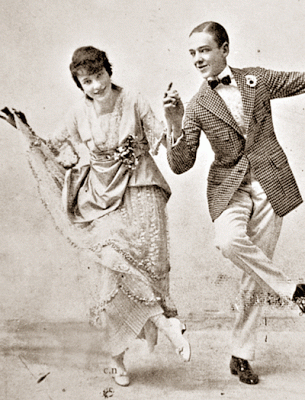 |
| Fred and Adele Astaire, 1915 |
Fred and Adele
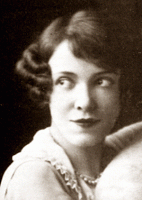 |
| Adele Astaire, 1919 |
Tags: Vol. 12 No. 6, 2012, Recommended reading
Browse articles by year: 2025 . 2024 . 2023 . 2022 . 2021 . 2020 . 2019 . 2018 . 2017 . 2016 . 2015 . 2014 . 2013 . 2012 . 2011 . 2010 . 2009 . 2008 . 2007 . 2006 . 2005 . 2004 . 2003 . 2002 . 2001 . 2000 . 1999 . 1998 . 1997 . 1996
Browse articles by topic: Art lessons . BenHaven Archives . Blank art diaries . Fine art photography . Framing . Illustration . Inspiration and creativity . Isles of Rune . Limited Editions Collection . My Fathers Captivity . News . Novellas . Oil paintings and prints . Operations announcements . Orders and shipping . Overview . Portfolios . The Papers of Seymore Wainscott . Project commentaries . Recipes by Nancy Young . Recommended reading . Recommended viewing . Temple artworks . The Storybook Home Journal . Tips and techniques . Tools supplies and operations
Browse articles by topic: Art lessons . BenHaven Archives . Blank art diaries . Fine art photography . Framing . Illustration . Inspiration and creativity . Isles of Rune . Limited Editions Collection . My Fathers Captivity . News . Novellas . Oil paintings and prints . Operations announcements . Orders and shipping . Overview . Portfolios . The Papers of Seymore Wainscott . Project commentaries . Recipes by Nancy Young . Recommended reading . Recommended viewing . Temple artworks . The Storybook Home Journal . Tips and techniques . Tools supplies and operations